Versions Compared
Key
- This line was added.
- This line was removed.
- Formatting was changed.
Overview
This guide is an indepth guide on how to generate a certificate using the Client Cert Request Util available here.
| Note | ||
|---|---|---|
| ||
Keeping the Client Cert Request Util in a centralised folder without moving between generating the REQ and KEY files and then returning the Partial Certificate makes things easier. Keeping in a single folder on the desktop or in documents will keep things easier to keep track of. |
Request a new certificate
- Run the Request Util program and then select Request a new certificate.
 Image Removed
Image Removed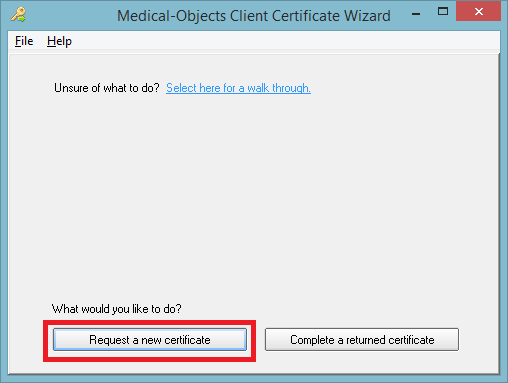 Image Added
Image Added Fill out the fields required with the relevant information, and continue clicking next.
 Image Removed
Image Removed
 Image Removed
Image Removed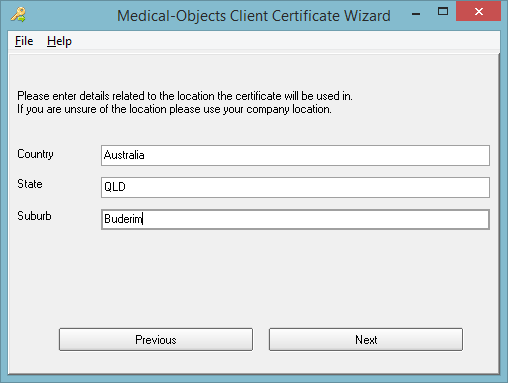 Image Added
Image Added  Image Removed
Image Removed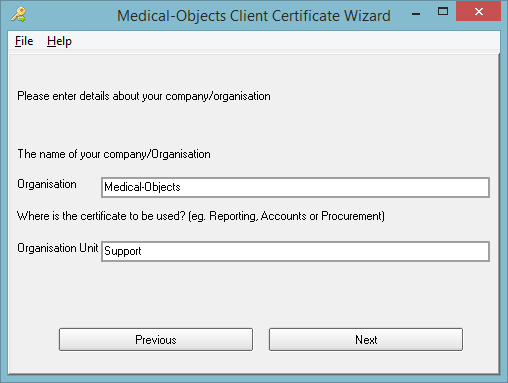 Image Added
Image Added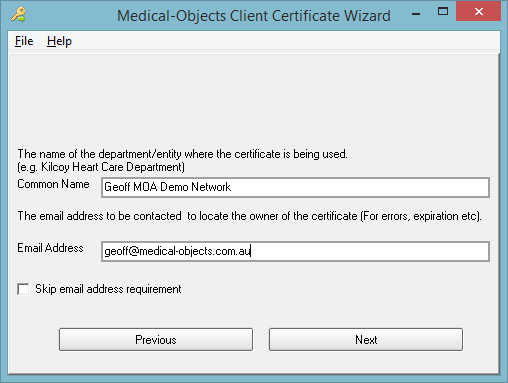 Image Added
Image AddedNote title Common Name The Common Name field will be what shows up in the Certificate Selection screen in the browser. Can either be shared as a generic user for the practice or company, or can be specified as a certain user.
- Click Generate Request, and then click on Save Request and choose a location to save the Request File (.req).
 Image Removed
Image Removed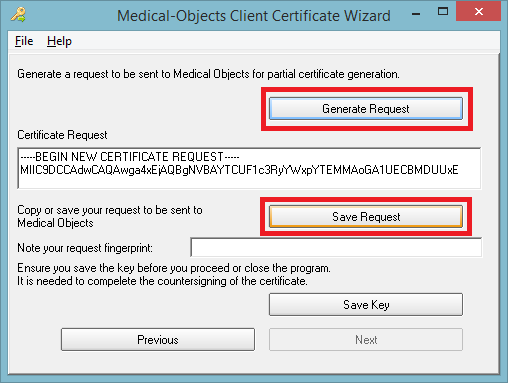 Image Added
Image Added
Click Save Key and choose a location to save the Key File (.key). Select a passphrase that will unlock the key upon returning the partial certificate (not the final password for login).Anchor Key File Password Key File Password  Image Removed
Image Removed Image Added
Image Added- The saved Request file will need to be combined with the CATool program in order to return the partial certificate to the Client Cert Request Util and corresponding Key file to generate a full certificate.
Complete a returned certificate
- Download and move the returned partial certificate.cer file into the original directory that you ran the RequestUtil.exe from as previewed below:
 Image Removed
Image Removed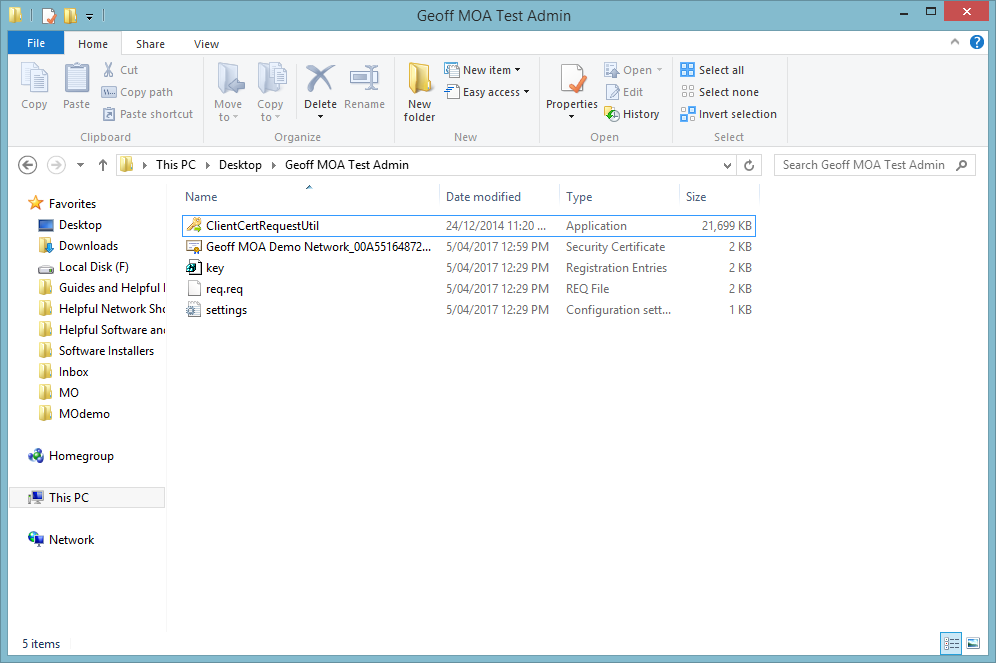 Image Added
Image Added - Run the Request Util program and then select Complete a returned certificate.
 Image Removed
Image Removed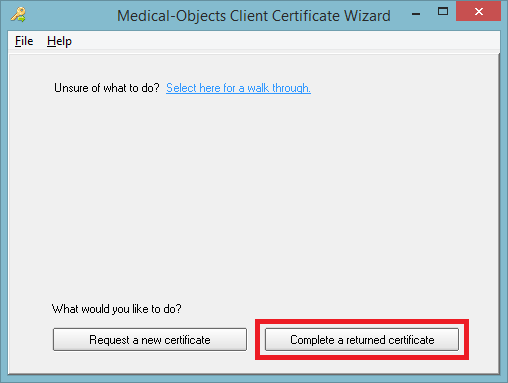 Image Added
Image Added - Select the corresponding Key file that correctly matches to the returned partial certificate.
 Image Removed
Image Removed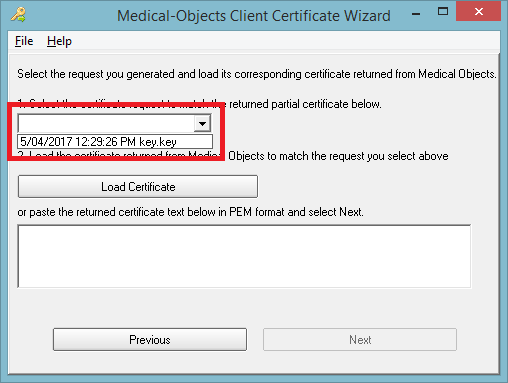 Image Added
Image Added - Click on Load Certificate and open the returned partial certificate file.
 Image Removed
Image Removed Image Removed
Image Removed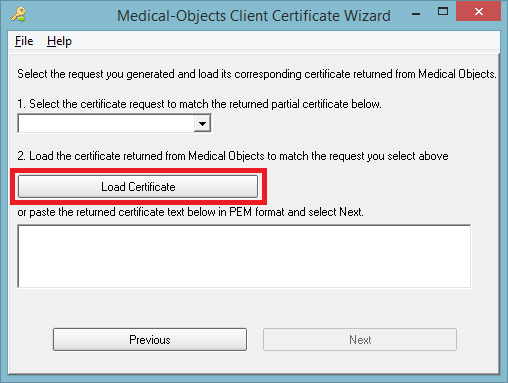 Image Added
Image Added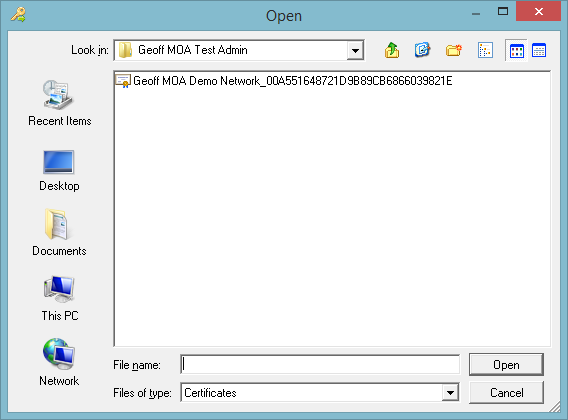 Image Added
Image Added - Enter the password of the Key file that you set earlier in Step 4 of Request a new certificate.
 Image Removed
Image Removed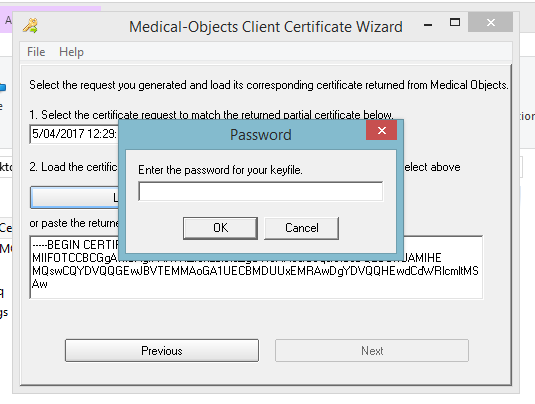 Image Added
Image Added - Click Next.
 Image Removed
Image Removed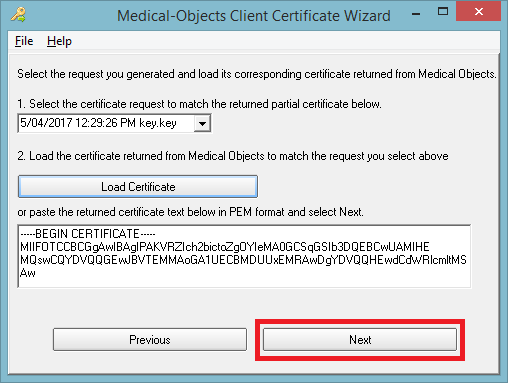 Image Added
Image Added - From here you can either import the certificate from within the wizard, or export the full certificate and import it once saved as a file.
Import Completed Certificate Request into Windows
| Warning | ||
|---|---|---|
| ||
This step is only required if you are using the certificate in Windows on the machine you are on and want to be prompted(This is a safer option) when the certificate is used. Subsection "Export to P12" is recommended instead if you have an automated system that can't supply a password to log into the certificate. |
- Select Import Completed Certificate Request into Windows.
 Image Removed
Image Removed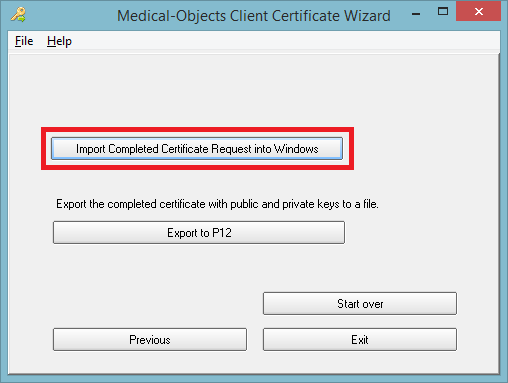 Image Added
Image Added - Click Set Security Level.
 Image Removed
Image Removed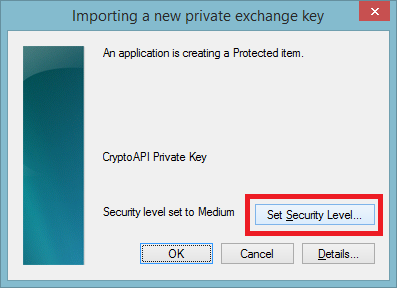 Image Added
Image Added - Change to High, and click Next.
 Image Removed
Image Removed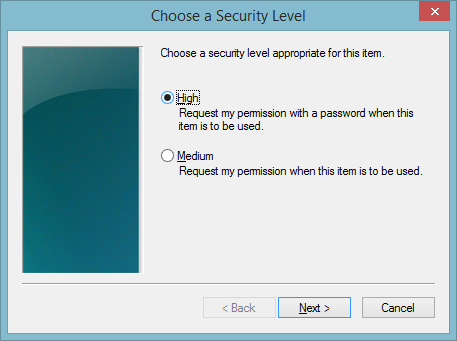 Image Added
Image Added - You will then be required to set a password that will be utilised when using the certificate to login. Once configured, click finish.
 Image Removed
Image Removed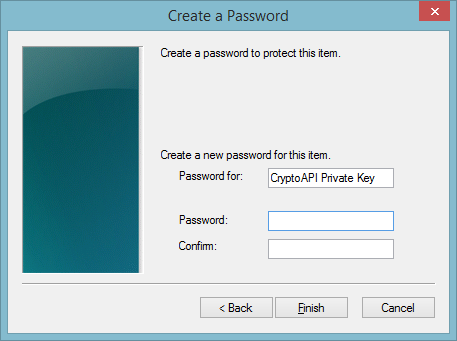 Image Added
Image Added
Export to P12
- Select Export to P12, and choose a location to save the file, such as the folder you have been working in, and set a password that will unlock the certificate (not the final password).
 Image Removed
Image Removed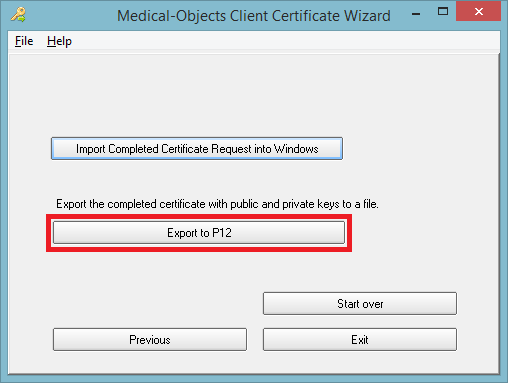 Image Added
Image Added  Image Removed
Image Removed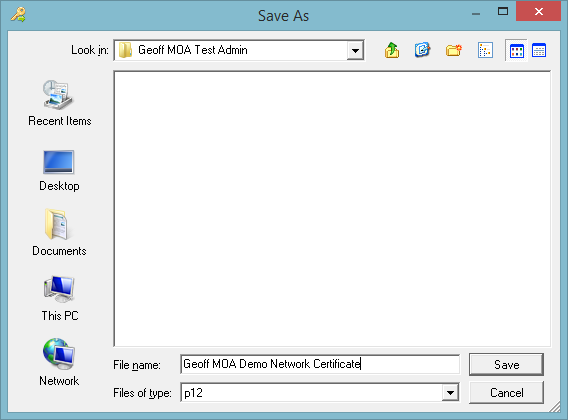 Image Added
Image Added  Image Removed
Image Removed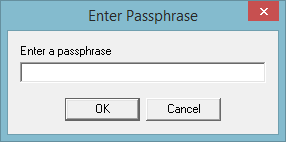 Image Added
Image Added - Double click the saved certificate, which should now start the Certificate Import Wizard (depending on Windows version). Keep Current User selected and click next.
 Image Removed
Image Removed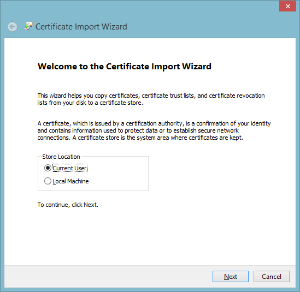 Image Added
Image Added - Leave file name as is, and click next.
 Image Removed
Image Removed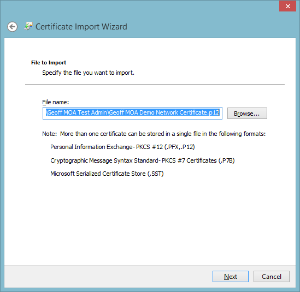 Image Added
Image Added - Type in the password used earlier in Step 1. Also would be recommended to tick Enable strong private key protection(Do not do this if you have an automated system that can't supply a password to login to the certificate).
 Image Removed
Image Removed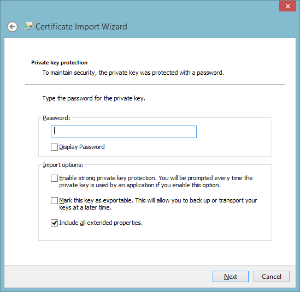 Image Added
Image Added - Select Place all certificates in the following store, and choose Personal. Click Next.
 Image Removed
Image Removed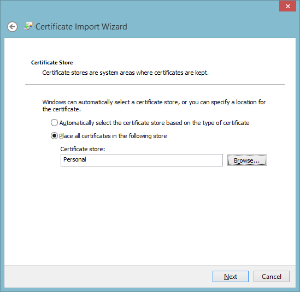 Image Added
Image Added - Click Finish on the next screen to complete the wizard.
 Image Removed
Image Removed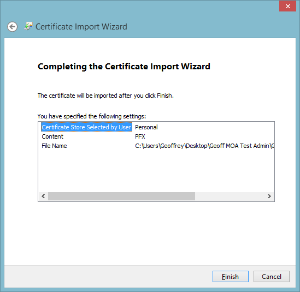 Image Added
Image Added - Click Set Security Level.
 Image Removed
Image Removed Image Added
Image Added - Change to High, and click Next.
 Image Removed
Image Removed Image Added
Image Added - You will then be required to set a password that will be utilised when using the certificate to login. Once configured, click finish.
 Image Removed
Image Removed Image Added
Image Added - The final The import was successful prompt should appear.
 Image Removed
Image Removed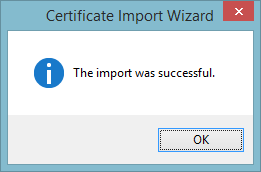 Image Added
Image Added
| Table of Contents | ||||
|---|---|---|---|---|
|